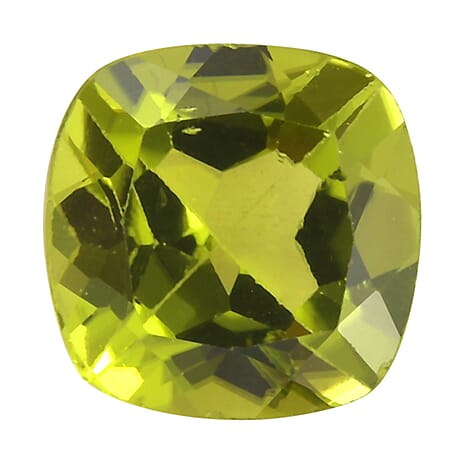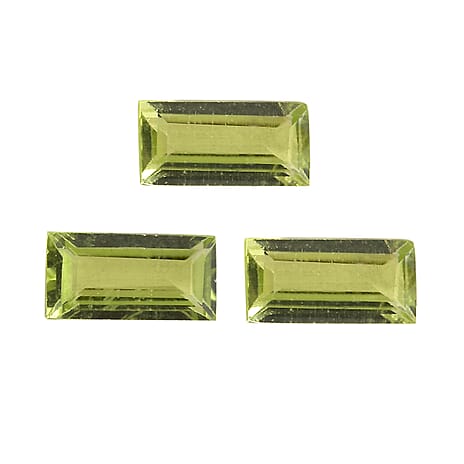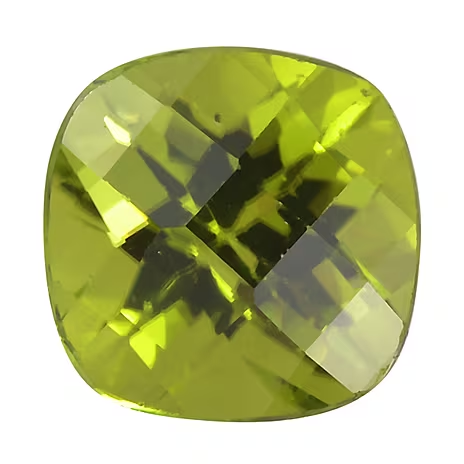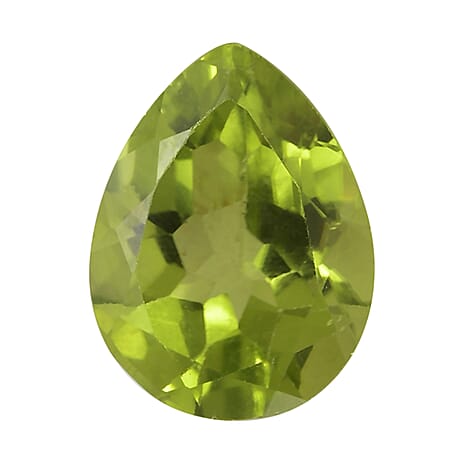Peridot Stone
Shop Peridot Jewellery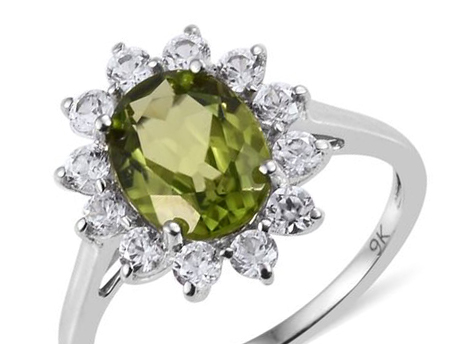
Known for its breath-taking and refreshing olive green hue, Peridot is a stone loved and doted on by several connoisseurs. The riveting and ravishing gem boasts a charming colour that makes all jewellery designs appear almost animated. Coveted for its rare beauty, peridot can be found in several different cuts, shapes, and sizes. However, what makes it all the more famed and luxurious is its absolute clarity. It is sourced naturally and there’s so much more that you need to know about it! Come and read everything there is to know about the famous peridot stone.
Introduction
Peridot stones are most commonly found in mafic and ultramafic rocks, found in the lava that comes close to the surface. Some may even find these crystals in meteorites. However, the size found in mafic rocks seem to bigger than the ones found in meteorites. Currently, this gem is primarily sourced from Arizona. However, there are other places of its finding, too, and they are: Australia, China, Brazil, Tanzania, Hawaii, Sri Lanka, South Africa, and more.
Origin and Supply of Peridot
Origin of its name is still not very clear. However, it is truly one of its kind and is known primarily for its uniquely found colour and clarity combination. In fact, peridot is counted among the rare stones that are available in single colours. Peridot stone is famously known and loved across the world for its brilliant grass green colour. However, the intensity of this green colour entirely depends on the amount of iron present in its composition. This amount makes it vary from washed-out, light olive colour to darker, olive-brown tones. Rare specimens may also have medium-to-dark tones of green, with the presence of brown tints.
Chinese Hebei Peridot:- – Often mistaken for emeralds, this rich and vibrant stone has been seen on the crowns of many royals. The specimens found from Chinese mines have been loved across the globe for their even colour and magnificent clarity. These said gems come from Zhangjiakou mines, which is located in the Hebei District of China. Only 20-30% of the rocks procured from here are of gem quality. The mining is only done in some parts of April, May, and June, given the low, sub-zero temperatures and difficulties seen in mining.
How is Peridot Mined?
Peridot is a stone formed because of massive pressure and heat. It is usually sourced from igneous rocks from lava. Rarely, it can also be found in meteorites. The technique of extracting this gem is usually done by hand. It’s found mostly on the surface, so labourers use crowbars, hammers, and other tools to scrape it off. Sometimes, its extraction is also done during the night-time, considering how the stone almost illuminates in moonshine. However, in some areas it gets risky, owing to the presence of snakes. Rarely, light explosives are also used but they can cause damage to the crystalline gems.
Properties of Peridot
The gorgeous olive-green stone is one of its kind. Peridot is counted in the only gemstones that are available in a single colour. However, there are a few important determinant factors that help you evaluate its quality. Like many other crystals, it also has important 4C’s determining its grade and value. It is to be noted that these stones are usually found in comparatively smaller sizes. Extracted from lava rocks and meteorites, they also have a relatively fragile structure. In fact, they rank 6.5-7 on the Mohs Scale of Hardness, which signifies their softness. Below are mentioned their more important 4C’s:
1. Colour
Peridot is considered to be one of the only stones that are available in single colour. However, you may find different shades and tones of this beautiful olive-green colour. If you’re looking for a refreshing lawn-green and bright colour, then your stone will be pricier. This colour is usually found in stones that weigh above 10 carats. Lower quality and cheaper stones will have washed-out green, yellow-green, or green with brown undertone shades in them. Colour is a crucial determinant when you’re evaluating the quality of your stone.
2. Cut
Cut plays an extremely important part in the appearance of this stone. You need a cut that displays its beautiful shades and stark clarity in the best of ways. Thankfully, peridot is considered to be easy to chisel and shape. With its softness of structure, it can be moulded in different shapes that enhance its crystalline quality. Among its most popular shapes are cushion, marquise, round, oval, trillion, among many more.
3. Clarity
The most precious feature of peridot is its clarity. The sublime gem displays no visible obstructions. In fact, it is one of the few crystals that have a neatly clear make. Upon magnification, you may find small, black dots in the stone. Sometimes, you may also come across some reflective discs in certain stones. These obstructions are called “lily pads” and they’re appreciated. If you’re looking a high and fancy grade of stone, it will have minimal to zero obstructions, inclusions, or clouding.
4. Carat
Another feature to keep in mind while determining the value of your stone is its carat weight. More commonly, you’ll find peridots that weigh around 10 carats. It is a comparatively cheaper stone and can be readily found in different carat weights. However, the rare and expensive varieties of it weigh above 30 carats. The absolutely luxurious-class gems weigh around 50 carats but are rarely found. If you’re looking for an affordable variety, you ought to look around 10 carats.
Peridot Gemstone Treatment:- In the current market, you will not find peridots to be treated or enhanced in any way. The gem is used just as it is found, more commonly. However, there may be instances where it is filled with epoxy-resin to make the structure more stable. Some specimens are also oiled after being cut and faceted. These processes are, however, common but they reduce the price as compared with the untouched and untreated gem.
Healing Properties of Peridot
Given its gorgeous green colour, peridot stone has been associated with a lot of legends and lore. Historically, too, it has been noted to be one of the most important stones known to civilizations. It has been born of fire and light and for the same reason, it is called “The Extreme Gem.” It is also revered deeply due to its extra-terrestrial origin. In fact, Olivine was found in comet dust that came back with the probe Stardust in 2006. In ancient myths, it is believed that peridot was a stone thrown off by explosions in the Sun. It landed on Earth, and thus, carries the healing powers of the Sun.
Wearing Peridot Stone
You may also wear the exquisitely sparkling green gemstone. Peridot is believed to be the bearer to strong powers. In fact, many warriors wore it talisman as it is believed to offer bravery. Another thing believed about the stone is power to repel dark magic. People wear the stone in amulets as they believe that it will protect them from evil eye, dark spirits, and other harming paranormal beings.
Wearing peridot jewellery may also reduce the negative emotions you harbour within yourself, like resentment, jealousy, spite, anger, and fear, among the others.
The physical benefits, as believed, of wearing this glistening gemstone are of regeneration. It is believed that it opens the mind and body to new and fresh avenues of positive growth. Some also believe that wearing it on the left arm may be a cure to madness.
Decorating Peridot Stone
Over the years, many legend-bearers and astrologers have claimed that the stone holds a lot of power, most of which is absorbed from the Sun. In fact, some even call it “The Gem of the Sun.” It is believed that by placing this gem in your room, it may rid you of fear, under-confidence, and anxiety. If set in gold, it may also help you repel night terrors.
Other than the above benefits, it is also excellently used during meditation. Like most other crystals, it is believed to cast out negativity and fill your state of mind with vibrancy, positivity, and happiness.
It may also be placed in the room of children, as it is believed to strengthen the immunity system. It is believed to nurture growth and also is heard to aid people suffering bipolar disorder, intestinal issues, along with heart and lung problems.
Peridot as Birthstone
Known by the name “Evening Emerald,” this stone was named Birthstone of August, back in the year 1912. There were lots of reasons for this, some maintain that it’s a popular protective stone. It is believed by healers that wearing Peridot in amulet or jewellery will protect the wearers who’ve been born in the month of August. It is also believed by some that it is symbolic of growth and budding relationships, and that it nurtures lost love between the partners.
Other than that, it is also a gem that’s used quite fondly for gifting on the 16th anniversary. People say that it maintains a long and loving relationship.
What to Remember While Buying Peridot?
There are some note-worthy things you need to keep in mind when you’re shopping for peridot stone. Albeit, the stone is relatively cheaper, it still has many imitations. Find out the more important features of it that you need to be aware of:
- Quite like almost all the other crystals, peridots too have 4 determining factors that determine their grade and quality. These 4Cs are cut, clarity, colour, and carat. You need to have basic information about them before you buy the gem.
- When it comes to the colour of this gem, it is available in a whole range of green hues. It is more commonly known for its bright and sparkling variants. The higher-priced specimens may boast of deeper and more intense green. However, the stones with brown undertones are usually undesirable.
- Peridot’s colour gets richer and more intense as it increases in size. Meaning that bigger stones will usually have a darker and better colour.
- Thanks to its abundant and easy finding, you may conveniently spot two same-looking gemstones to form your own set. It will be easy to locate a peridot pendant with stone as green and as bright as the ring you have.
- The best-quality gemstones of bigger cuts and intense colours are usually extracted from Burma (now Myanmar) and Pakistan.
- Peridot is one of the very few stones that don’t need any treatment or enhancement in any way. It is beautiful and flaunt-worthy just as it is found.
- You also need to may focus and attention to the distribution of colour in your peridot. The colour should be evenly spread out. Only then it is its value equal to the money asked for it. Study your gem under light to note if its colours are as even and intense as at the centre.
- Peridot looks extremely beautiful if it is on the base of white or yellow metals. That is why peridot jewellery in gold or silver will always be more popular and desirable. It has to do with how brilliantly it stands out.
- It is also very important to note that peridot is only found absolutely clear. It has minimum to zero inclusions. Sometimes, it may have small black spots, but they don’t affect its transparency in any way.
- Found rarely, peridot also has some imitations. These are called simulants. But due to peridot’s pocket-friendly prices, they aren’t very popular.
Frequently Asked Questions About Peridot
There are several questions that people find relating to peridots. Here, in this section, we have tried to answer more commonly found questions.
1. Is Peridot Stone Real?
Yes, peridot is a real, naturally occurring gemstone. It is found in igneous or lava rocks. Rarely, it can also be spotted and extracted from meteorites. It doesn’t go under any treatment or enhancement and is worn just as is.
2. Is Peridot A Hard Stone?
Not necessarily. Peridot only ranks 6.5-7 on the Mohs Scale of Hardness. That means, it is relatively easier to scratch, crack, or even shatter. You need to be careful while deciding the setting of this stone in your jewellery design and also while wearing it.
3. How Much Is A Peridot Stone Worth?
The value of a peridot entirely depends on its colour and size. The higher-priced specimens of this stone are usually spotted to be bigger in size and they also have darker and richer colour.
4. Where is Peridot Most Commonly Found?
In the current market, the biggest sources of peridot are Arizona, Pakistan, China, Myanmar, and Vietnam. However, these are not the only sources of this gem. It is also found in Hawaii, Tanzania, Australian, Sri Lanka, and other such places.
5. Peridot Birthstone Is for Which Month?
Peridot is the birthstone for August. August actually is the latest month of the year that has two birthstones. Apart from peridot, there is also spinel. The green gem symbolises growth and prosperity.
6. Is Peridot A Healing Stone?
Peridot is, in fact, considered to be a protecting stone. It is believed that if worn as a talisman, it can ward off the evil eye and harming paranormal beings, too. Many believe that it protects the wearer from negativity, too.
7. How to Tell If A Peridot Stone Is Real?
The best way of telling whether your stone is real or not is by holding it up against the light. If it causes double refraction, it is real. However, if refracts a single beam of light, what you’re holding is probably glass or cheaper imitation of the gem.
8. Is Peridot A Precious Gem?
Peridots are abundantly found across the world, at several different locations. However, the kinds used for embellishing in jewellery are rare. This makes them precious stones. Depending on the price, they’re not as expensive.
9. What Are the Benefits of Peridot?
When worn, peridot can have a lot of benefits, healers claim. It is worn as an amulet and helps people with problems of and relating sinus, asthma, stomach, thyroid, eye, and even the overall immunity system.
10. Is Peridot and Olivine the Same?
Peridot is a variety of olivine. It has been made of fayalite and forsterite. The presence and amount of iron present in its composition decides the colour and intensity of green found in peridot.
Shop Peridot Jewellery
Facts About Peridot
There are some interesting and fun facts about peridot that you would find interest in. Below is mentioned the list with some of them:
- Peridot is counted among the very few stones that are available in only a single colour. It can be only be found in green, however, different shades of green may be noted in its variety.
- If you wish to find out if your stone is real, you can take a simple magnet test. Peridot is a stone that’s made of iron, so it’ll always be attracted to magnets. Place you gem in a Styrofoam cup and will it with water till the gem floats. Then place a magnet over the cup. If you note even a small movement of it toward the magnet, know that your gem is real.
- Peridot birthstone is named for the month of August. It is believed that it brings happiness, luck, and joy to the people who are born during this month.
- Egyptians called peridot “Gem of the Sun” and they were quite taken by it. They also believed that wearing the stone as a talisman would wear off the evil eye and negativity.
- Many people believe that the famous emeralds that were worn by Egyptian Queen Cleopatra are actually collections of peridots. It is said that the stone remained undiscovered at the time and was often confused for the more popular emerald.
- Due to its brilliant crystalline make and availability on the surface, peridot is known to almost glow or illuminate during the night, when it is hit by moonlight. This makes extracting the stones easy.
- Ancient Romans called these stones “evening emeralds.” This was done so because they didn’t darken during night time. In fact, they almost shimmered under the candle-light, which made them extremely favourable.
- Peridot stone ranks only 6.5-7 on the Mohs Scale of Hardness. This means that it is comparatively easier to scratch, abrade, or break. You need to be careful while wearing its jewellery as well as while choosing its setting.
- Peridot is an abundantly-found gemstone. However, the variants that are fit for jewellery designs are rare to come across. There are 2 types of the stone – Type A and B. Type A is known for lesser obstructions and is in a beautiful shade of green. Type B is considered undesirable for jewellery.
- The largest ever cut peridot is available in the whopping size of 310 carats. It is currently displayed at the Smithsonian Institute in Washington D.C.








